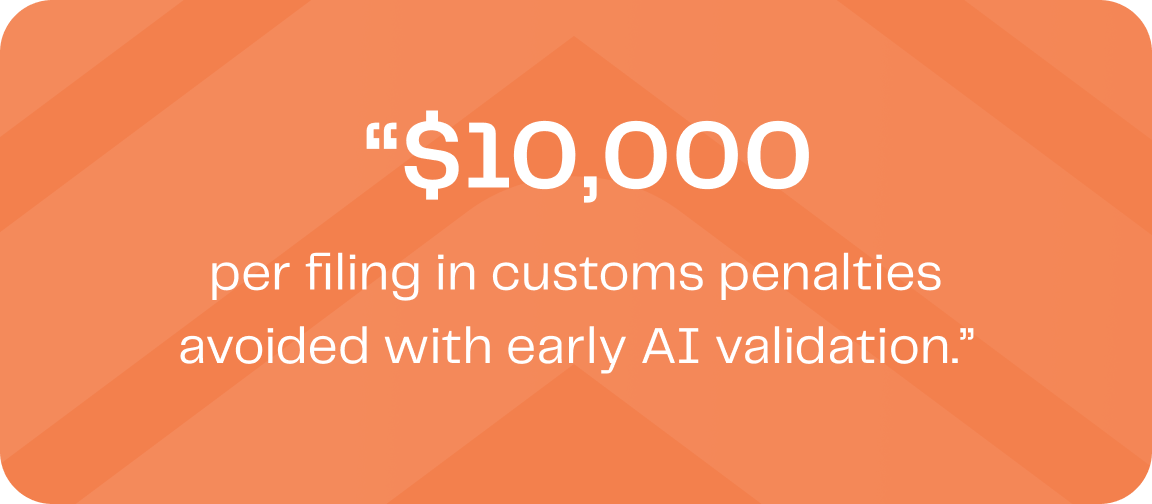Claudio Fiaoni has spent over 30 years in logistics technology, implementing TMS, ERP, and AI-driven solutions across global organizations. At Raft, he works directly with freight forwarders and customs teams to guide AI adoption on the ground.
The Shadow AI Paradox
MIT’s State of AI in Business 2025 report reveals that 90 percent of employees already use personal AI tools like ChatGPT daily, while only 40 percent of companies provide official access.
The workforce isn’t resisting AI. They’re adopting it faster than their employers. So why does the “job killer” narrative still linger? And more importantly, what does successful adoption actually look like in logistics?
At Raft, we see it every day in logistics. Companies treat AI like a software rollout, scoped to one department, trained once, and left to run. Even when they pass readiness assessments, they fail at scale because they lack an operating model. That mindset almost guarantees failure.
The Fear vs. Reality Disconnect
When Claudio speaks with logistics teams, the first concern he hears is familiar: “You’re replacing my expertise. I’m afraid my team will go away.”
That fear is real, but the data tells a different story. MIT shows layoffs are limited and mainly concentrated in outsourced functions like BPOs or call centers, not internal operators.
Consider two examples:
- Accenture CEO Julie Sweet reported cutting 30 percent of external creative costs while continuing to grow headcount.
- DHL describes AI as a “colleague,” capturing the knowledge of retiring experts by confirming with operators — “Have I understood this process correctly?” before digitizing workflows.
These examples confirm what Claudio sees in the field: AI is about augmentation, not replacement, when framed correctly from the start.

The Co-Pilot Mindset: Where Implementation Succeeds
Claudio argues that success starts with a simple reframe: AI is the co-pilot, not the replacement. Operators remain in control while AI takes on the repetitive tasks.
The difference is clear:
- Before: 45 minutes spent manually checking tariff codes across three systems.
- After: 5 minutes reviewing AI-suggested classifications.
MIT’s research supports this. Companies that cross what it calls the “GenAI Divide” start small, prove value quickly, and integrate AI into workflows rather than bolting it on. These firms succeed in production at twice the rate of those that try to build internal systems from scratch.
But Claudio stresses: it’s not about the model, it’s about learning. “If the system doesn’t adapt to your workflows, you’re back to tribal knowledge. That’s where risk lives.”
Where the Real ROI Lives
One misconception is that AI value sits mostly in sales and marketing. MIT’s data shows half of AI budgets go there, yet back-office automation often delivers faster, clearer ROI.
- BPO elimination: $2–10M saved annually in service and document processing.
- External spend reduction: 30% decrease in agency/creative costs.
- Risk management: $1M annually saved on outsourced compliance.
In logistics and customs, the numbers translate into penalties avoided and cash cycles accelerated:
- $10,000 fines per filing for incorrect documentation.
- $100–300 per container per day in demurrage from delays.
As Claudio notes, “This isn’t just efficiency. Faster clearance and fewer penalties create real revenue.”

Making the Transition: Practical Steps
Both research and field experience point to the same playbook:
- Start small. One document type, one process, one region.
- Prove value. Use narrow but high-impact use cases.
- Build trust. Create feedback loops that show AI learning over time.
- Empower champions. Operators who see results early spread adoption internally.
The organizations that succeed decentralize authority to line managers while holding vendors accountable to measurable outcomes. Treat AI providers like process partners, not software vendors.
Building an AI Operating Model
Scaling AI requires more than a pilot win. It demands a repeatable operating model that integrates across functions. That means:
- Consistent governance over how models learn and adapt.
- Shared accountability between operations, IT, and compliance.
- Executive sponsorship to fund and defend change.
Note: These are not the same as readiness signals. Readiness tells you whether to start. An operating model tells you how to sustain it. For a diagnostic view of readiness, see The Readiness Test.
Lessons From the Field
We have seen forwarders treat AI like a plug-in, assigning it to a single department. Six months later, nothing had changed. Operators did not trust it. Finance ignored it. The project died.
As Sean Chinski, our Chief Sales Officer, notes: “The companies that scale AI successfully are not the ones with perfect data. They are the ones with executive sponsorship, change readiness, and a quantifiable business case.”
The Urgency Factor
The next 18 months will separate leaders from laggards. Enterprises are already locking in vendor relationships and building systems that learn continuously — creating switching costs that will be hard to unwind.
Julie Sweet warns: “You have to be willing to rewire your company. AI can’t be bolted on.”
She also predicts artificial general intelligence (AGI) could arrive within a decade. For logistics leaders, this isn’t about science fiction — it’s a reminder that technology is moving faster than organizational adoption cycles. Companies that delay risk embedding outdated processes while competitors integrate AI into their daily operations.
The message is clear: the window to build adoption strategies is closing.
The Bottom Line
AI isn’t universally a job killer, but it’s not neutral either. Success depends on approach. Companies that frame AI as augmentation, start with learning-capable systems, and focus on cost reduction rather than headcount cuts are building sustainable advantages.
Next Step: Ready to understand where your organization stands today? Take Raft’s AI Readiness Assessment, part of our Adopting AI in Freight Forwarding and Customs Brokerage playbook. It’s a quick way to benchmark your processes, technology, people, and culture so you can launch AI projects that deliver measurable ROI in 90 days, not 18 months.
